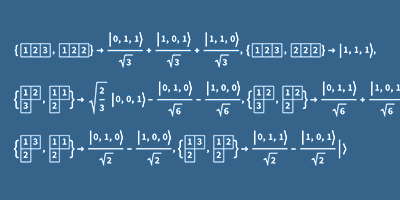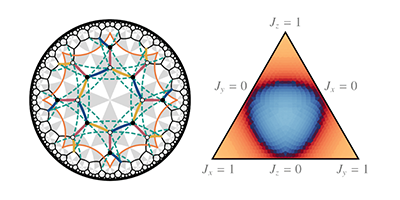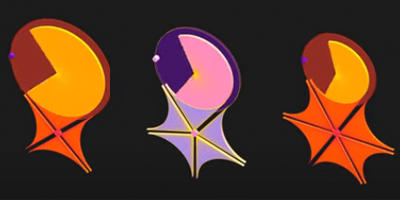Computational Thinking beyond Computer Science Education Week
Whatever their future fields, students need to learn computational thinking, a method of problem solving in which questions are framed in a way that can be communicated to a computer.
Computational thinking can be integrated across the curriculum. It is not just the purview of the math teacher or the computer club, but a key instructional tool for educators from all disciplines. For example, using the Wolfram Language to teach computational thinking, English teachers can explore palindromes, history students can explore main concepts from the Gettysburg Address and science teachers can examine dinosaurs’ weights.
How does a busy teacher apply computational thinking in the classroom? Easily: computational thinking provides a framework for learning, which makes concepts easier for students to understand. It incorporates real-world math into students’ everyday lives.
For instance, using the Wolfram Programming Lab during Computer Science Education Week, you can teach students to think computationally about geography. The “Miles around You” starter Exploration will allow your students to see what exists in their vicinity. Students can make a map of the location, then draw a disk of any size around it and zoom in and out to gain perception. How many sites show on the map at a radius of 100 miles? What about 150 miles?
This exercise requires no knowledge of the Wolfram Language. The activity can last as long or as short as the students and teacher desire. Yet it introduces in a relevant way how computational thinking can answer questions. As students advance with their Wolfram Language engagement, they can complete Wolfram challenges on a variety of subjects, from basketball scores to Pig Latin.
Students are often bored with math in school because they do not see the real-world applications of their lessons. Computer-Based Math education lets students use computers at school the same way they would in their everyday lives: with the computers, not the humans, performing rote calculations. Computational thinking helps students discern which calculations the computer needs to solve so they can explore higher concepts. For instance, if your students are basketball fans, they can take a Wolfram challenge to discover how a basketball team can reach a certain score. The many applications of computational thinking make it easy to incorporate math throughout the curriculum.
Computational thinking in the classroom encourages student engagement when students see the results of their efforts. Maybe your students are excited about the upcoming holidays. Why not let them create a unique decoration in the Wolfram Demonstrations Project?
This example and other Wolfram Demonstrations are accessible ways to explore computational thinking at any level of classroom. Once you’ve played with a few interactive examples, contributing your own Demonstration might be a fun and informative way for you and your students to spend an Hour of Code.
The Wolfram Summer Programs are one example of a place where students learn computational thinking through achieving their personal goals. This year at the Wolfram Summer School in Armenia, students developed their original ideas into working prototypes. Prior to the Armenian and other Wolfram camps, students prepare by completing homework assignments. Students can do the same in a flipped classroom, where they experience material before coming to class and arrive at the in-person lesson ready to engage with an activity.
If you’ve flipped your classroom, then computational thinking can be easily integrated into this environment by introducing your students to the Wolfram Language and using it to work with real-world data. An Elementary Introduction to the Wolfram Language Training Series will provide the pre-class materials for your students. Using this video series, you and your students can learn the basics of the Wolfram Language. Maybe you’re teaching an astronomy lesson this week. The Real-World Data video can introduce your students to computational thinking by using the Wolfram Language to explore planets, stars, galaxies and more—perhaps during the Hour of Code.
With computational thinking, students will learn by doing. Allow students to follow their own interests. Let them choose projects that intrigue them or relate to something they are already undertaking in class. Work computational thinking into the syllabus. Computational thinking is part of the learning process, not a single lesson.
Computational thinking can lead students to answer big questions. Are your students interested in public health? Teaming up with each other—and perhaps members of Wolfram Community—they can use the Wolfram Language to model the spread of a global disease outbreak.
Professors can teach computational thinking too. Perhaps you’re a humanities faculty member. Why not flex your own computational thinking by learning to analyze your data with the Wolfram Language? You and your students may be surprised by what you discover.
Here at Wolfram, there are more plans to help educators teach a generation of students computational thinking. For Computer Science Education Week, we will be hosting another Hour of Code event: middle- and high-school students will go on a computation adventure. If you’re unable to join us in person, why not host your own event?
If you’ve decided to have an Hour of Code, perhaps spend your time having students create tweetable programs—code that fits into 140 characters. Or analyze sea level rise, like Anush Mehrabyan did during the 2015 Wolfram High School Summer Camp. Or create a camera-controlled musical instrument. The examples are inspiring; the possibilities are exciting.
Whatever you decide to do with your students, don’t confine computational thinking and Computer-Based Math to Computer Science Education Week or an Hour of Code. Have fun exploring—and please let us know what you and your students create and learn.








Comments